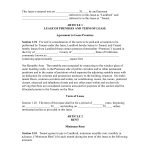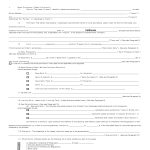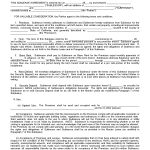Table of Contents
This California Commercial Lease Agreement form is intended for a business entity renting space in a commercial building in California.Under California Civil Code 1950.7, a landlord is entitled to demand a security deposit against damage or default. The landlord must return the security deposit, less any charges for damages or unpaid rent, within 30 days of the lease termination.
Late Fee and Liquidated Damages
Under California Civil Code 1671, when there is a breach of contract, the injured party is permitted to seek liquidated damages. In this lease, liquidated damages will be a late fee of 5% if rent is paid late. If rent is paid late more than twice in a 12-month period, the tenant will have to pay quarterly in advance instead of monthly.
If the property is damaged, the landlord may repair it under certain conditions and may terminate the tenant’s lease under certain other conditions. If the tenant causes the damage, the tenant will be responsible.
The landlord agrees to maintain the building itself and the common areas. The tenant agrees to maintain the unit being leased. The tenant agrees not to make any alterations to the unit.
Use of Premises, Taxes and Utility Bills
The tenant must specify what the commercial space will be used for and that it will not be used as a residence. The tenant must agree to comply with all laws and not to put up signs or other decorations without permission.
The landlord agrees to pay all property taxes, except if the tenant improves the property and the taxes go up. In that case the tenant will reimburse the landlord for the additional taxes.
The landlord agrees to pay for standard water, gas, electricity, and outside maintenance. The tenant agrees to pay for janitorial service if desired and electricity and water over and above the agreed-upon usage.
Tenant Responsible for Loss or Injury
The tenant agrees that the landlord will not be liable for any loss, injury, or death on the premises. The tenant agrees to carry all appropriate insurance including liability and Worker’s Compensation. Both landlord and tenant waive rights to subrogation.
If the property is condemned or seized through eminent domain, the lease may be terminated.
Non-Occupancy and Subletting
The tenant agrees not to let the unit remain unoccupied for more than ten days at a time or to sublet the unit to any other tenant.
Violations of Terms of this Lease
If the tenant violates the lease, fails to pay rent, or files for bankruptcy, the landlord can repossess the unit. The landlord may pursue damages up to the amount of unpaid rent under California Civil Code, section 1951.2, or other damages including attorney’s fees.
If the tenant’s actions or inaction force the landlord into court, the tenant will be responsible for attorney’s fees. If the tenant and the landlord litigate against each other, the prevailing party will pay all attorneys’ fees.
If the lease terminates and the tenant remains in the unit and pays rent, the lease converts to a month-by-month agreement. If the landlord dies, this lease is binding on the heirs. If the landlord wishes to sell or refinance the property, the tenant must provide a certificate of estoppel or financial statements as requested.
The tenant agrees to comply with the Americans with Disabilities Act and to dispose of all bio-hazardous materials.
How to Fill
- Enter the date.
- Enter the landlord’s name or business name.
- Enter the tenant’s name or business name.
- Enter the city, county, address, and square footage of the unit.
- Enter the lease term and the beginning and ending dates.
- Enter the monthly rent and any scheduled changes to the rent.
- Enter the security deposit.
- Enter the tenant’s intended use of the unit.
- Enter the square footage for electricity purposes.
- Enter the square footage for water purposes.
- Enter the addresses where the landlord and the tenant can legally receive service.
- Enter the date and city.
- Landlord signs and enters name and title.
- Tenant signs and enters name and title.
California law does not require that a lease be witnessed, notarized, filed, or registered. It is valid upon execution. Both the landlord and the tenant should keep a copy of the lease in a safe place.
Free California Commercial Lease Agreement - PDF Download
California Law Codes
- California Civil Codes : 1950.7, 1951.2, 1671





